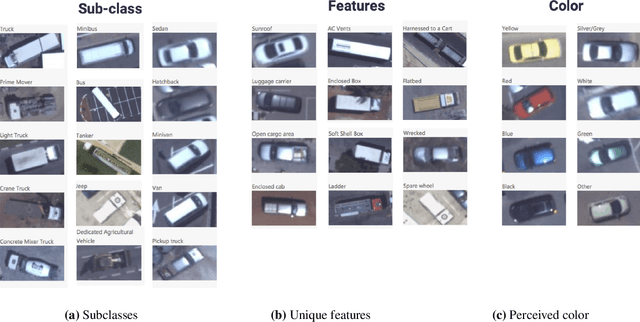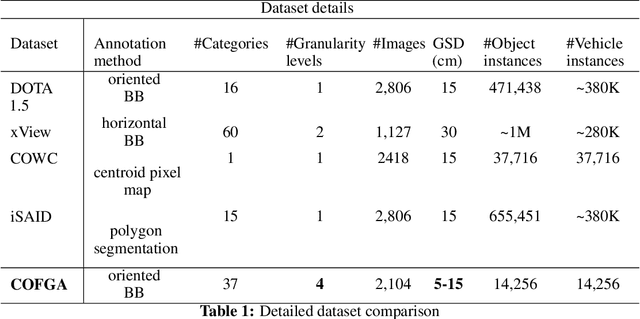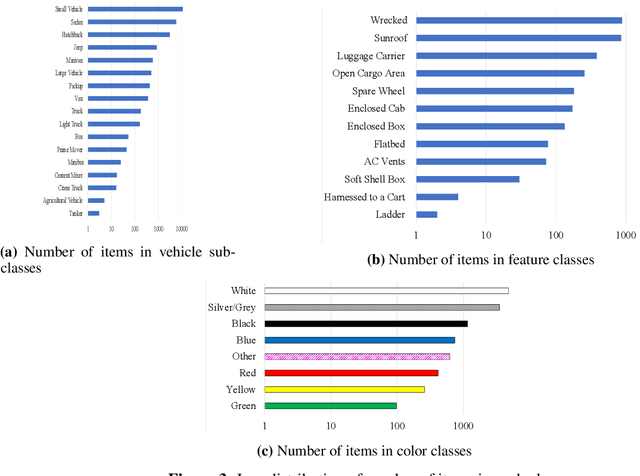Eran Dahan
Age-Invariant Face Embedding using the Wasserstein Distance
May 04, 2023Abstract:In this work, we study face verification in datasets where images of the same individuals exhibit significant age differences. This poses a major challenge for current face recognition and verification techniques. To address this issue, we propose a novel approach that utilizes multitask learning and a Wasserstein distance discriminator to disentangle age and identity embeddings of facial images. Our approach employs multitask learning with a Wasserstein distance discriminator that minimizes the mutual information between the age and identity embeddings by minimizing the Jensen-Shannon divergence. This improves the encoding of age and identity information in face images and enhances the performance of face verification in age-variant datasets. We evaluate the effectiveness of our approach using multiple age-variant face datasets and demonstrate its superiority over state-of-the-art methods in terms of face verification accuracy.
cofga: A Dataset for Fine Grained Classification of Objects from Aerial Imagery
May 26, 2021



Abstract:Detection and classification of objects in overhead images are two important and challenging problems in computer vision. Among various research areas in this domain, the task of fine-grained classification of objects in overhead images has become ubiquitous in diverse real-world applications, due to recent advances in high-resolution satellite and airborne imaging systems. The small inter-class variations and the large intra class variations caused by the fine grained nature make it a challenging task, especially in low-resource cases. In this paper, we introduce COFGA a new open dataset for the advancement of fine-grained classification research. The 2,104 images in the dataset are collected from an airborne imaging system at 5 15 cm ground sampling distance, providing higher spatial resolution than most public overhead imagery datasets. The 14,256 annotated objects in the dataset were classified into 2 classes, 15 subclasses, 14 unique features, and 8 perceived colors a total of 37 distinct labels making it suitable to the task of fine-grained classification more than any other publicly available overhead imagery dataset. We compare COFGA to other overhead imagery datasets and then describe some distinguished fine-grain classification approaches that were explored during an open data-science competition we have conducted for this task.
A Unified Approach to Kinship Verification
Sep 12, 2020



Abstract:In this work, we propose a deep learning-based approach for kin verification using a unified multi-task learning scheme where all kinship classes are jointly learned. This allows us to better utilize small training sets that are typical of kin verification. We introduce a novel approach for fusing the embeddings of kin images, to avoid overfitting, which is a common issue in training such networks. An adaptive sampling scheme is derived for the training set images to resolve the inherent imbalance in kin verification datasets. A thorough ablation study exemplifies the effectivity of our approach, which is experimentally shown to outperform contemporary state-of-the-art kin verification results when applied to the Families In the Wild, FG2018, and FG2020 datasets.
SelfKin: Self Adjusted Deep Model For Kinship Verification
Sep 22, 2018



Abstract:One of the unsolved challenges in the field of biometrics and face recognition is Kinship Verification. This problem aims to understand if two people are family-related and how (sisters, brothers, etc.) Solving this problem can give rise to varied tasks and applications. In the area of homeland security (HLS) it is crucial to auto-detect if the person questioned is related to a wanted suspect, In the field of biometrics, kinship-verification can help to discriminate between families by photos and in the field of predicting or fashion it can help to predict an older or younger model of people faces. Lately, and with the advanced deep learning technology, this problem has gained focus from the research community in matters of data and research. In this article, we propose using a Deep Learning approach for solving the Kinship-Verification problem. Further, we offer a novel self-learning deep model, which learns the essential features from different faces. We show that our model wins the Recognize Families In the Wild(RFIW2018,FG2018) challenge and obtains state-of-the-art results. Moreover, we show that our proposed model can reduce the size of the network by half without loss in performance.
COFGA: Classification Of Fine-Grained Features In Aerial Images
Aug 27, 2018



Abstract:Classification between thousands of classes in high-resolution images is one of the heavily studied problems in deep learning over the last decade. However, the challenge of fine-grained multi-class classification of objects in aerial images, especially in low resource cases, is still challenging and an active area of research in the literature. Solving this problem can give rise to various applications in the field of scene understanding and classification and re-identification of specific objects from aerial images. In this paper, we provide a description of our dataset - COFGA of multi-class annotated objects in aerial images. We examine the results of existing state-of-the-art models and modified deep neural networks. Finally, we explain in detail the first published competition for solving this task.
 Add to Chrome
Add to Chrome Add to Firefox
Add to Firefox Add to Edge
Add to Edge